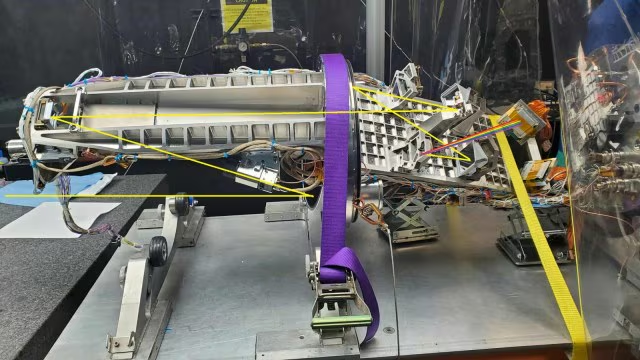



The Telecom Regulatory Authority of India (TRAI) is implementing distributed ledger technology (DLT) to register customer spam preferences, a method used to control Unsolicited Commercial Communications (UCC). This technology, along with the Department of Telecommunications (DoT) and telecom companies, is aimed at preventing fraud.

Copyright infringement not intended
Picture Courtesy: The Hindu
The Telecom Regulatory Authority of India (TRAI) is set to use distributed ledger technology (DLT) to register spam preferences from customers.
It is a statutory body established under the Telecom Regulatory Authority of India Act 1997.
A Chairman and members appointed by the Union government lead TRAI. They serve a three-year term or until they reach the age of 65, whichever is earlier.
The Telecom Disputes Settlement and Appellate Tribunal (TDSAT) is an appellate authority that resolves disputes in the telecom sector of India. It was established under the Telecom Regulatory Authority of India (TRAI) Act of 1997.
It regulates the telecom industry and focuses on controlling Unsolicited Commercial Communications (UCC), which is commonly known as spam.
|
Spam is any kind of unwanted, unsolicited digital communication that gets sent out in bulk. Often spam is sent via email, but it can also be distributed via text messages, phone calls, or social media. |
Since 2007, TRAI has implemented a Do-Not-Disturb (DND) registry, which ensures that telemarketers respect customer preferences. If a customer registers on the DND list, they should not receive any spam calls or SMS.
It also introduced a DND app for easy registration and complaint management. Under the Telecom Commercial Communication Customer Preference Regulation (TCCCPR) 2018, repeated offenders who target DND-registered users face penalties, including being blacklisted.
Blockchain technology helps to fight spam by creating a distributed ledger of approved message senders, which ensures that only verified entities can send messages, making it easier to trace who is sending an SMS.
The blockchain ledger stores each approved sender and the specific format of messages. This system prevents fraudsters from using disposable phone numbers or creating fake sender IDs.
It ensures that no one can tamper the data, it provides a secure method to track and verify commercial messages.
The Department of Telecommunications (DoT) introduced the Sanchar Saathi portal, with a reporting site called Chakshu for users to report suspected fraudulent calls and messages.
DoT works with law enforcement and banks to cancel numbers associated with unauthorized telemarketers and scammers.
The DoT has set up the Telecom Security Operation Centre in New Delhi to monitor suspicious internet traffic.
Telecom companies, such as Airtel, have also started using Artificial Intelligence to detect suspicious calls and label international calls as “Suspected Spam,” a practice being adopted by other providers as well.
Must Read Articles:
Telecom Regulatory Authority of India (TRAI)
Source:
|
PRACTICE QUESTION Q.Which one of the following is correct about the term “Phishing attacks”: A) It requires physical access to the victim's device. B) They are harmless and do not cause any damage. C) Tricking individuals into revealing sensitive information. D) Type of denial-of-service attack. Answer: C Explanation: A phishing attack is a cybercrime where a malicious actor attempts to trick users into voluntarily providing sensitive information, like passwords or credit card details, by sending seemingly legitimate communications, usually through email, text messages (smishing), or phone calls (vishing), designed to appear as if they are coming from a trusted source, like a bank or online retailer, with the goal of stealing personal data or installing malware on the victim's device. |






© 2025 iasgyan. All right reserved